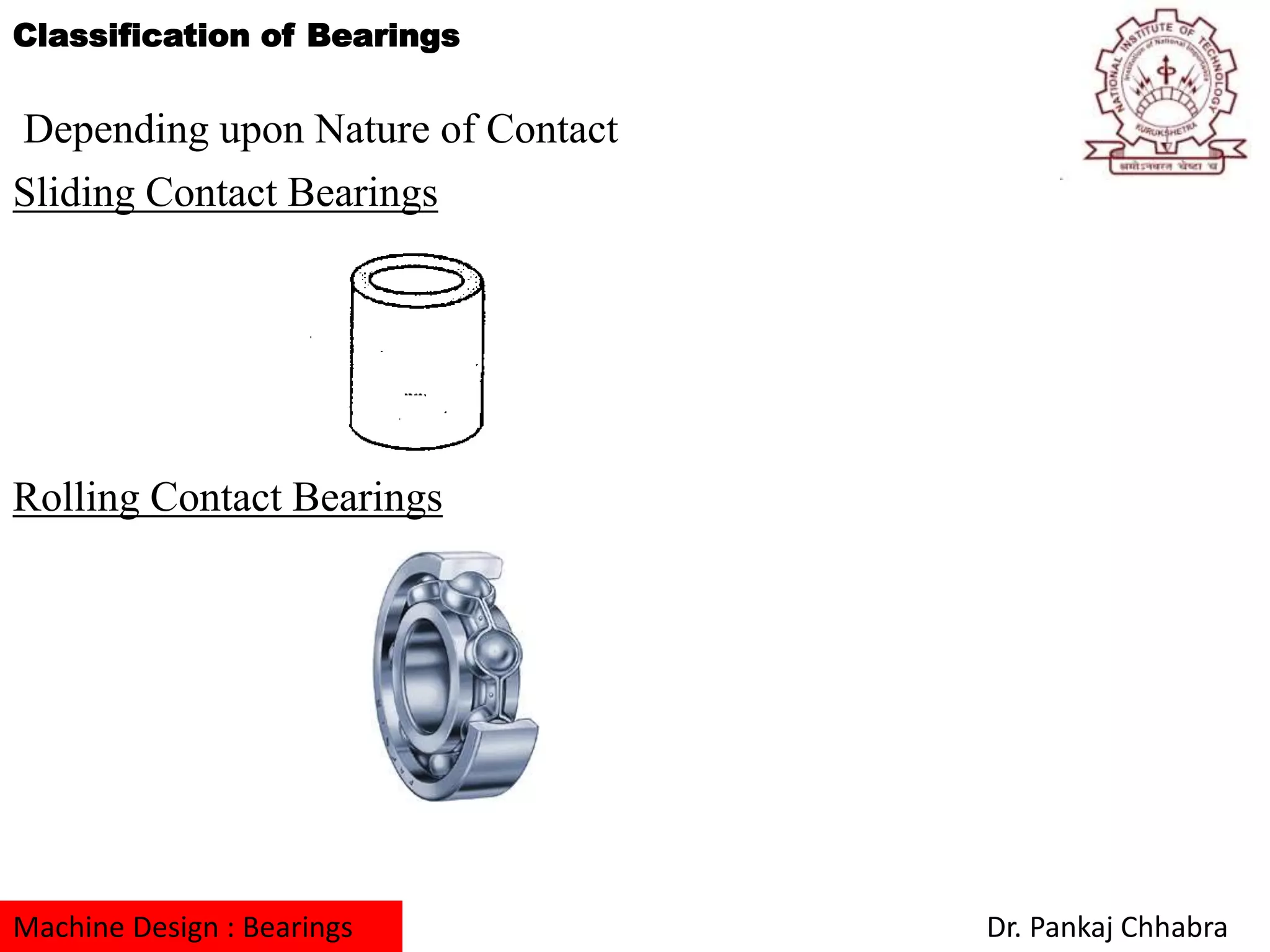This document discusses bearings, including their classification, types, materials, and load characteristics. It begins by defining bearings and their functions. It then covers classifications based on load direction and contact type. Various types of rolling contact bearings are described, including ball, roller, taper, and spherical bearings. Static and dynamic load capacities are discussed. Methods for calculating equivalent bearing loads and selecting bearings based on load and life are presented. The document provides a comprehensive overview of bearings and considerations for their selection and use.














































